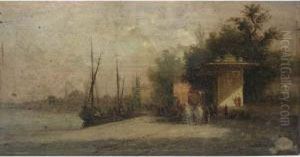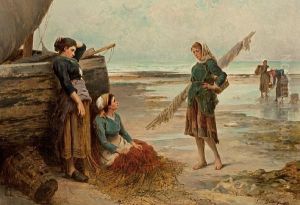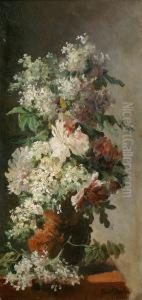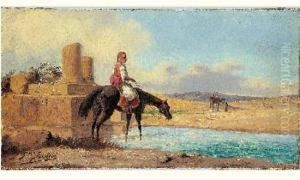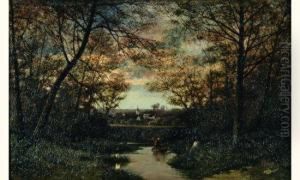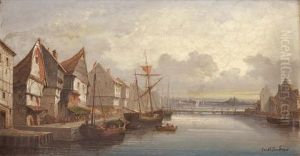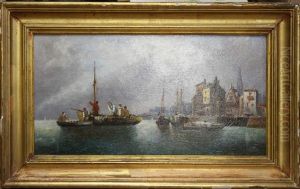Ferdinand Bonheur Paintings
Ferdinand Bonheur, born in Bordeaux, France, on July 17, 1817, was a French landscape and animal painter, belonging to the famous Bonheur family of artists. He was the older brother of Rosa Bonheur, who is widely considered one of the most famous female painters of the 19th century. He came from an artistic family; his father, Raymond Bonheur, was a drawing teacher and painter, and his siblings, including his sister Rosa and brother Isidore, were also successful artists.
Ferdinand received his initial artistic training from his father and later worked closely with his sister, Rosa, who had a significant influence on his work. He developed a passion for painting animals and rural landscapes, themes that were also prominent in Rosa's work. Ferdinand Bonheur's style was characterized by its realism and attention to detail, which was in line with the artistic trends of the period.
Throughout his career, Ferdinand exhibited his works at the prestigious Paris Salon, receiving public recognition and accolades for his depictions of the French countryside and its fauna. He was particularly known for his ability to capture the essence of the animals he painted, imbuing them with a sense of life and realism that resonated with art enthusiasts and critics alike.
Despite his talent, Ferdinand Bonheur often lived in the shadow of his more famous sister, Rosa. Nevertheless, he enjoyed a successful career as an artist, contributing to the rich tapestry of 19th-century French art. His paintings can be found in various museums and private collections, attesting to his skill as a painter and his contribution to the artistic heritage of his time.
Ferdinand Bonheur passed away on April 19, 1887, leaving behind a body of work that continues to be appreciated by art historians and lovers of traditional French landscape and animal painting.



